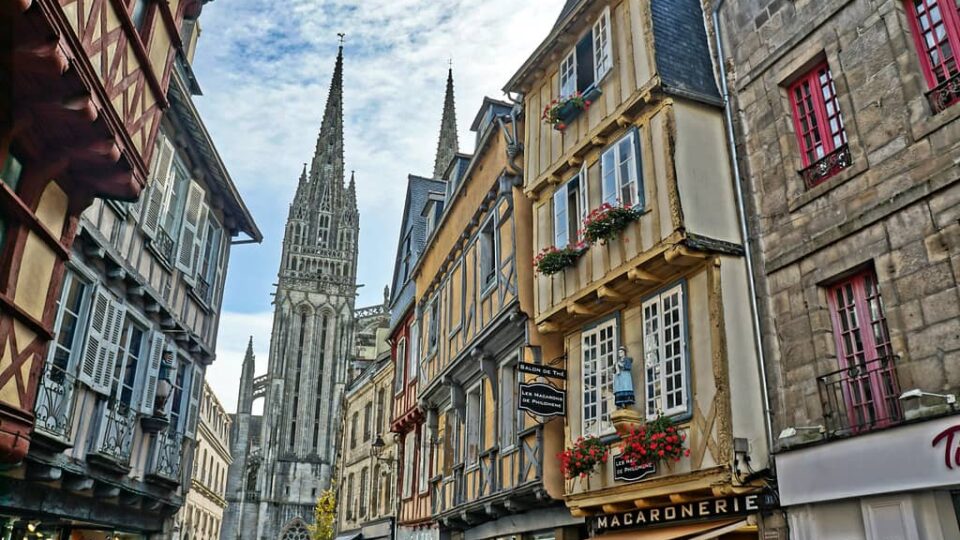What Is Quimper Famous For
The historic city of Quimper is characterized by a bold identity of Finistère, just close to the western point of Brittany. Quimper is famous for its amazing old town, with medieval timber-framed houses with emblematic Breton granite at the base. At every corner is a seducing crêperie.
The 1200s cathedral is touted to be Brittany’s most beautiful gothic building. Also, the Locmaria quarter is where, since 1690, Quimper’s famous faïence are made. Visit in July for the Festival de Cornouaille, with local costume, much bagpipe music, and dancing. Pamper yourself to the ocean-fresh seafood and the tasty cider that is native to the Cornouaille province.
>>Also Read: Is Quimper Worth Visiting?
Here Are A Few Things Quimper Is Famous For
Quimper Cathedral
Usually, the best cathedrals are slightly grotesque ones, and Quimper’s is one of them. This imposing structure is distinct because the north end of the nave curves a bit inwards in the center; this was designed against an area of mucky ground in the 1200s’ construction. Several people agree that this is Brittany’s greatest gothic construction. Among the several things that will catch your attention are the stately stained windows in the choir that was appended between 1408 and 1415. Outside, raise your gaze to identify the 1800s statue of the semi-mythic King Gradlon on a horse between the fantastic spires.
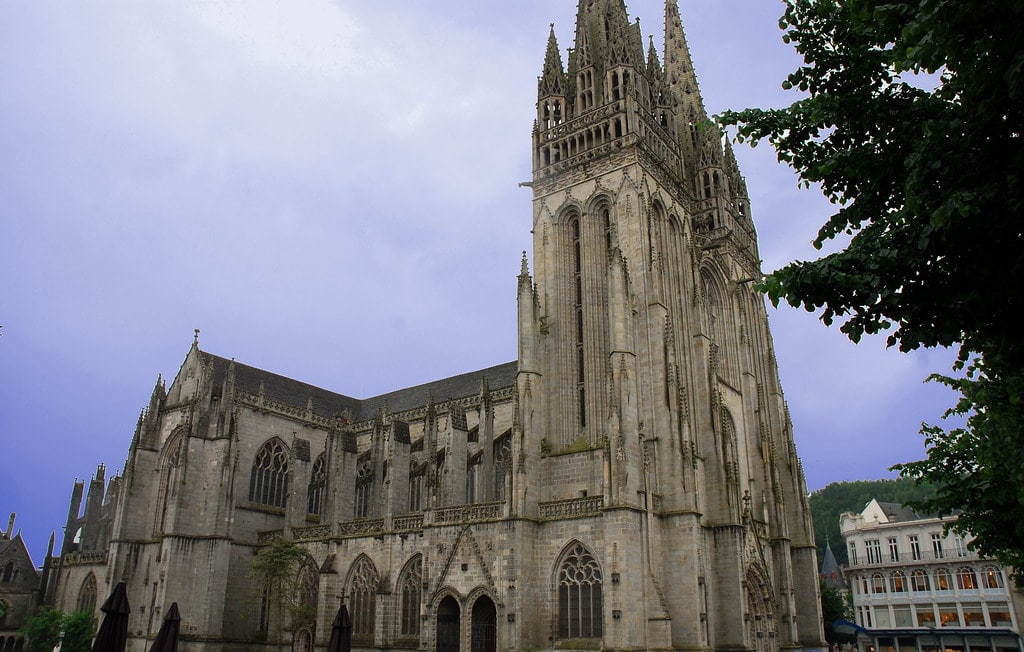
>>Also Read: Most Beautiful Cathedrals in France
Musée des Beaux-Arts
Many of what you will first see at the city’s old Fine Arts Museum used to be owed by Jean-Marie de Silguy. He donated over a thousand pieces in 1864 on a stipulated condition that the city builds a museum to showcase them. There is a focus on French school paintings from the 1600s to 1700s, in the company of Carl van Loo, Lubin Baugin, Pierre Bignard, and Fragonard. However, Silguy also owned Flemish and Dutch art by maestros like Breughel the Younger, Rubens, and Jacob Jordaens. Also, there is a room dedicated to the 1900s Quimper-native Max Jacob. He was an artist and a writer who moved in the same company as Picasso and Jan Cocteau. There are some works by these artists, together with his own pieces.
>>Also Read: Best Museums in France
Museum of Quimper Pottery (Musée de la Faïence de Quimper)
“Quimper” means ceramics for many. In the Locmaria quarter, Faïence pottery has been made since the late 1600s, just southwest of the center of town. These jugs, plates, vases, and bowls are painted by hand and usually have rustic, domestic design. The essential picture is about the Petit Breton, a man dressed in 1600s regional costume.
Sprawled over two floors, this art repository in Locmaria boasts of over 2,500 works of faïence and offers visitors the best summation of Quimper’s earthenware industry. You will know more about the reputable manufacturing techniques and see how the designs have changed since the early 18th-century.
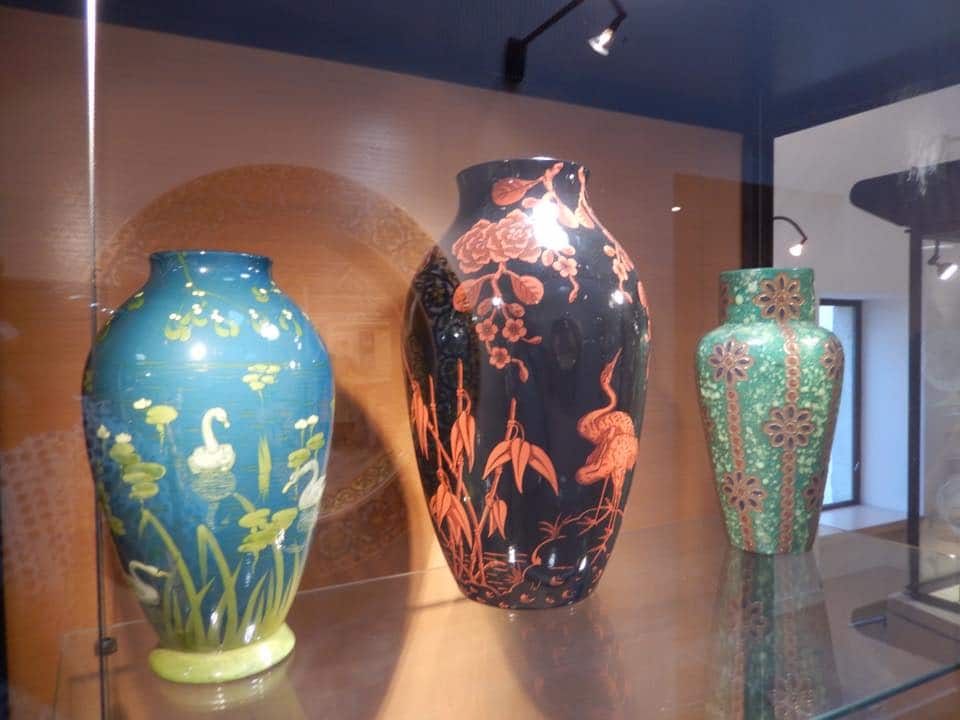
Breton County Museum (Musée Départemental Breton)
The Cornouaille Bishops lived from the 16th-century to the 19th-century in the Episcopal palace. It is where you will find the Breton Departmental Museum. It is an engaging trip through the robust culture and heritage of Finistère and Quimper. There are traditional costumes, stained glass, paintings, ceramics, furniture, and others.
See the peculiar traditional box-bed (lit-clos), beds kept in their own wooden closets that keep people warm when closed in winter. You will also find Bronze and Iron Age treasures, Quimper pottery, medieval polychrome statues. At the same time, the structure has the Tour de Rohan from 1507, scaled with a stunning spiral stairway.
Odet River
A vast majority of people visiting Quimper by car will park south of this river before crossing it to reach the old quarter. Just beneath the cathedral, there are lots of crossing, most of whom are strictly for pedestrians. Visitors can also board a boat for an hour and more cruise down the river with Vedettes de l’Odet. I recommend that this be done in the spring when the banks south of the town are veritable for the flourishing of purple wile rhododendrons. The thick vegetation accommodates herons and egrets.
Quimper’s Old Town (Vieux Quimper)
Outlined roughly by the Steir to the west and by the Odet to the south, Quimper’s delightful medieval quarter is incredibly pedestrianized. The squares and streets even keep the names of their time-honored trades; Rue Kéréon is for the shoemaking corporation that was situated there while Place au Buerre owes its name for the butter churners.
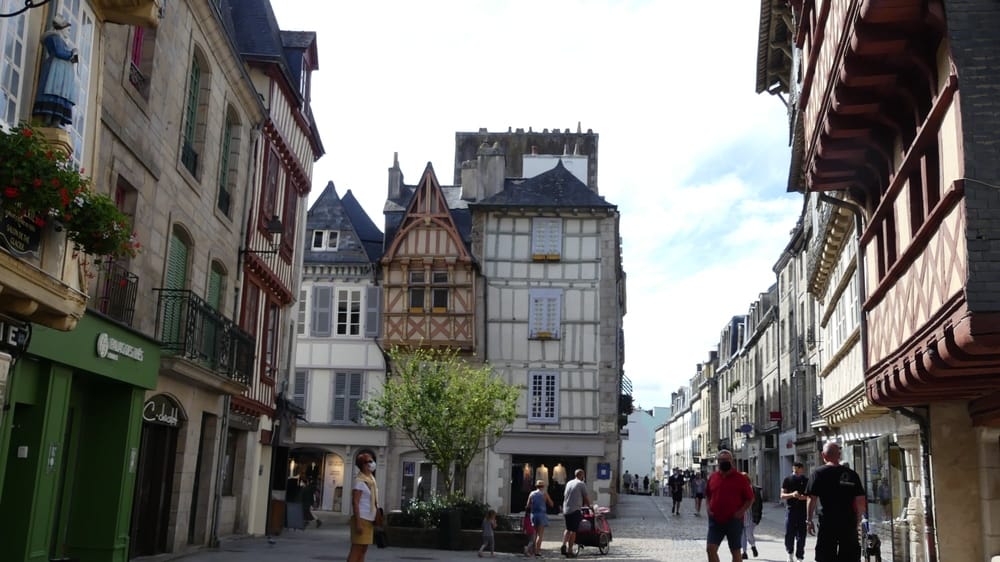
Mont Frugy
Rising quickly from Odet River’s left bank is a 70 m hill that has always been lauded to be part of the viewpoint. Owing to this hill, the city was even shortly renamed “Montagne Sur Odet” in the French Revolution. It is a clever way for visitors to work the calves for a moment, going through six hectares of forest to the crest where you can gaze on the town’s medieval quarter. In October 1987, a hurricane devastated a chunk of Western Europe. It left the hill plain; however, Frugy was replanted not long after.
Gorges of Stangala
After rounding up a tour of Quimper, visitors could as well trail the Odet upriver on the GR 38 footpath. They will approach the region’s most magical natural landscapes, just beyond the northeastern suburbs of Quimper. There is a steep valley with slopes for 5 km at a 45° gradient and riverbanks bloom with the ferns, the greenery of most rocks, and beech trees. You will find big granite boulders on the riverbed that allow you to jump across the water.
Festival de Cornouaille
Every year in Quimper, the city honors its Breton heritage for five days in the medieval quarter’s comfortably atmospheric environs. There are plenty of basic things to see in the course of such festivities like the bagpipe music competition, the big parade of Breton folk costumes, dancing workshops which visitors can join, and the yearly crowning of the festival’s queen.
Manoir du Kinkiz
If you liked Breton cider in the town, you will surely want to see the original cider press just 5 km southeast of Quimper. The Manoir du Kinkiz is situated in 30 hectares of orchards where about 21 varieties of apples are grown. You will also get a clear detail of how Cournouaille AOC cider is pressed, preserved in oak barrels, and bottled. What is more, you can taste their Lambig, cider, and pommeau. Children are not left out of the fun as well. At the tasting session, they will be treated to freshly pressed apple juice.
Jardin de la Retraite
After stepping into the terrific garden up against Quimper’s eastern ramparts, you will think it is outside the city. Reminding visitors of the 1500s voyagers who returned from American expeditions with exotic plant seeds, this subtropical garden is a place to see.
The explorers discovered that the Breton climate was conducive for any plant to grow; therefore, the region became a place of exotic species’ acclimatization. There are different palms, hydrangeas, rhododendrons, and camellias, and a Mexican desert garden with agaves, yuccas, and aloes in a bed of white and pink gravel.
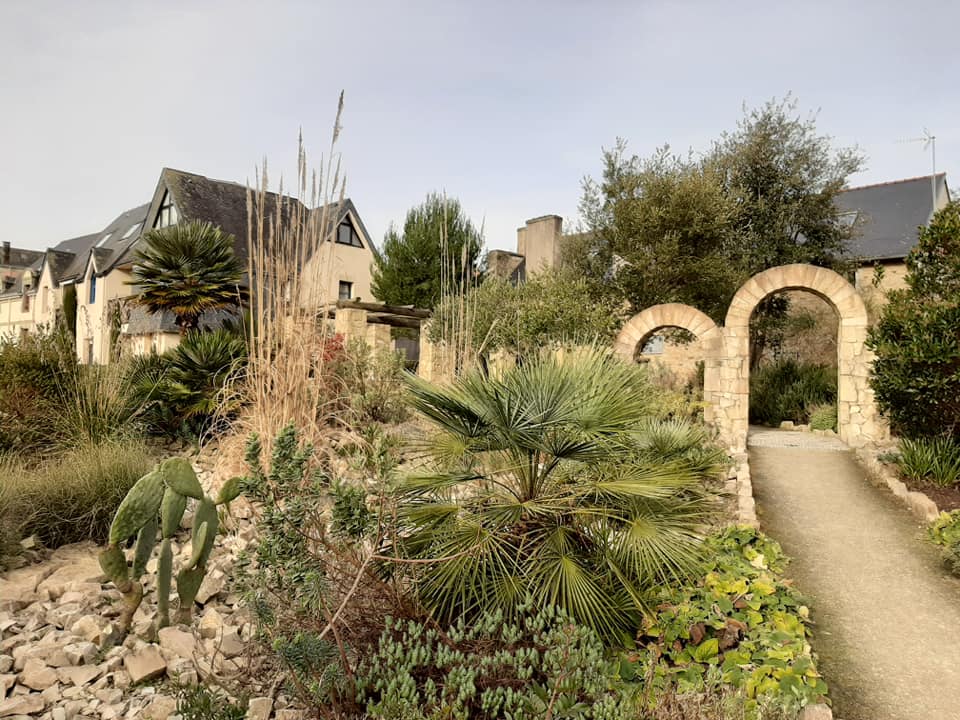
Locronan
Getting to Locronan from Quimper is easy and quick. Locronan is one of France’s most stunning villages and it is some kilometers to the north. The appeal of the village is from the sense of togetherness, with streets of the 1600s and 1700s cottages and granite houses that remind of when the town used to be a hemp trade hub that supplied Spanish, British, and French navies with sails and rigging. Also, you will find the tomb of St. Ronan at the Locronan Church. He was an Irish hermit who was vital to the spread of Christianity in Brittany in the 6th-century.
>>Also Read: Is Brittany Worth Visiting?
Douarnenez
For those who fancy delving into the region’s maritime heritage, the town of Douarnenez, just 20 km northwest of Quimper has what you want. Four fishing harbors are looked over by fine cut fishers’ cottages. This town used to be the center of the country’s sardine industry and it still retains that disposition as you will see when you visit. The Port-Musée is magnificent and will reveal the local ships of Brittany as it shows you the people who controlled them.
>>Also Read: Is Brittany Safe?
What Quimper Is Famous For – Summary
Situated in the far west of France, Quimper sits on either side of the Odet as it flows its trail into the Atlantic Ocean. Among the many things, Quimper is most famous for its half-timbered, old-fashioned buildings. This is the cultural hub of Brittany, as you will find much engaging stuff here. Right from the get-go, Quimper gives you another Breton experience you would not be able to refuse.
>>Also Read: What is France Famous For?
